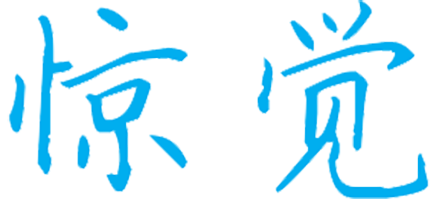Field Notes & Build Playbook: Installing, Configuring, and Shipping a Lightweight Site With Burido
Who this guide helps and what you’ll build
The Burido Theme is a minimal, multipurpose layout system designed to help you ship elegant sites without drowning in settings. Whether you’re building a portfolio, creative studio page, SaaS landing, or a simple content hub, this guide blends a hands-on installation tutorial with pragmatic usage tips to get you live quickly and keep performance tight. We’ll cover a clean install, smart demo import, typography and color decisions, page patterns, SEO and speed tuning, and a dependable launch checklist—using the Burido Theme as the base and modern WordPress Theme practices to stay lean. Optional resources can be explored at GPLPal.
Pre-flight checklist (get these right first)
-
Hosting & PHP: Use PHP 8.x, HTTPS enabled, HTTP/2 or newer, and object caching if available.
-
Fresh WordPress: Start clean. Settings > Permalinks = Post name.
-
Media plan: Decide hero image sizes and grid dimensions now; it prevents rework later.
-
Plugins: Keep essentials only (forms, SEO, cache). Minimal stacks render faster.
-
Staging: If you have traffic at an existing domain, set up a staging subdomain to build safely.
Three installation methods for the Burido Theme
Method A — Dashboard upload (fastest for most)
-
Download the theme zip.
-
Appearance > Themes > Add New > Upload Theme.
-
Choose the zip, Install, then Activate.
-
Install recommended plugins when prompted.
This simple route suits single-site builds and smaller packages.
Method B — SFTP install (when uploads time out)
-
Unzip locally.
-
Upload the theme folder to /wp-content/themes/ via SFTP.
-
Appearance > Themes and Activate.
Useful on slow connections or strict server limits.
Method C — WP-CLI (repeatable for teams)
-
SSH to the server.
-
wp theme install /path/to/burido.zip --activate
-
wp plugin install elementor contact-form-7 --activate
Ideal for staging-to-production workflows and scripted deployments.
First-run wizard & demo import, without bloat
-
Theme Dashboard or Appearance > Import Demo.
-
Pick one Burido demo closest to your goal: portfolio, agency, app, or blog.
-
Deselect extra pages you won’t use (duplicate home variants, alt headers).
-
Import content, widgets, and customizer options together to avoid mismatched styles.
-
Settings > Reading > Static Front Page: set Home; choose a Posts page if you run a blog.
-
Tools > Regenerate Thumbnails so images fit Burido’s grid precisely.
Tip: Import one demo only. Multiple imports cause clutter and slow editing.
Design system: colors, fonts, spacing, and rhythm
Burido’s minimal philosophy shines when your design tokens are consistent.
— Color palette: pick a neutral surface (near-white or soft gray), a strong text color (charcoal), and one accent (ink blue, amber, or violet).
— Typography: one heading family and one body family is enough. Use a 1.25 type scale: 16, 20, 25, 31, 39px for clarity across breakpoints.
— Spacing: standardize section paddings (e.g., 72/96px desktop, 48/64px mobile). Use consistent gaps in grid/list blocks.
— Components: define Primary and Secondary buttons once; re-use across CTAs to reduce visual noise.
— Iconography: line icons at a uniform stroke; avoid mixing styles.
Header, navigation, and footer that guide visitors
Header: keep it uncluttered—logo, main nav, a single CTA (Contact, Start Free Trial, or View Work). Enable a sticky header if pages run long.
Navigation: 5–7 items max. Group by intent: Work/Projects, Services, About, Blog, Contact.
Footer: mirror key links, add a short mission statement, contact email, social links, and a tiny legal block. If you capture emails, place a compact subscribe form.
Homepage blueprint that respects attention
-
Above the fold: clear headline, one-sentence value prop, and a confident CTA. Use a crisp hero image or subtle gradient; avoid heavy sliders.
-
Proof section: quick stats, logos of clients/press, or platform badges.
-
Featured work or features: 3–6 cards with concise descriptions; each links to a deeper page.
-
Social proof: short testimonial quotes; keep it real and specific.
-
Secondary CTA: for cautious users—View Case Studies, Read Docs, or Download Deck.
-
Footer CTA: a soft nudge to contact or subscribe.
Portfolio and project pages (for creators and agencies)
Structure: overview, goals, constraints, solution, results, and a gallery.
Add context: roles, timeline, tools, stack, and KPIs.
Cross-link: at the bottom, link to related projects, services, or the contact page.
Media: export WebP images at actual render sizes; caption to add meaning.
Services and pricing (for studios and freelancers)
Split into service families: Strategy, Design, Development, Growth.
Each service page: problem statement, process overview, deliverables, timeline ranges, and outcomes.
Pricing: show ranges or starter packages; link to a detailed brief template or intake form.
Blog and content strategy (for SEO & trust)
Burido’s clean typography helps long reads.
— Editorial cadence: 2 posts/month is sustainable.
— Topics: how-tos, teardown case studies, and “build notes” with real metrics.
— Internal links: connect new posts to your cornerstone pages (Services, Projects, About).
— CTAs: subtle inline blocks to Contact or Subscribe, not intrusive pop-ups.
Forms that convert without friction
Use one universal contact form with conditional fields for “Project,” “Support,” “Speaking,” etc. Keep required fields minimal: name, email, message, optional budget range. Enable a success message and send a confirmation email with response times.
Performance tuning for Burido
-
Image discipline: pre-size hero to the container, serve WebP/AVIF, lazy-load everything below the fold.
-
Fonts: self-host WOFF2, preload primary weights (e.g., 400/700), limit to two families.
-
CSS/JS: avoid over-aggregating builder assets; defer non-critical scripts; inline critical CSS for the hero.
-
Caching: enable page caching and set a 7–30 day TTL for static assets; purge on content updates.
-
Database health: remove unused demos, media, and transients monthly.
Accessibility basics baked in
— Contrast: meet or exceed WCAG AA for text/background.
— Focus states: ensure visible outlines for keyboard users.
— Motion: keep animations subtle; respect reduced-motion preferences.
— Alt text: concise, descriptive image alts that add meaning beyond the visuals.
SEO foundations that compound over time
— Site structure: one primary intent per page. Avoid keyword overlap.
— Titles & metas: human-first, then keyword-informed.
— Schema: add Organization, Breadcrumb, Article/BlogPosting, and FAQ where helpful.
— Media SEO: descriptive filenames and alt text; add captions when they explain decisions.
— Internal linking: every new page should link to at least two older, relevant pages—and vice versa.
E-commerce or lead capture (optional)
If you sell templates or services directly, pair Burido with a lightweight checkout. Keep product pages simple: benefits, features, FAQs, and social proof. Minimize fields at checkout; support modern wallets where possible.
Security and maintenance cadence
— Backups: daily database, weekly files, 30–90 day retention.
— Updates: apply theme/plugin updates on staging first.
— Users & roles: editors don’t need admin rights; enable 2FA.
— Audit: quarterly cleanup of plugins and media; check error logs.
Design recipes you can copy today
— Portfolio grid: 3-column on desktop, 2 on tablet, 1 on mobile; 24px gutters.
— Feature list: icon + short heading + one-line explanation; keep each card equal height.
— Testimonial stripe: portrait, quote, name, role; don’t exceed ~18 words per quote.
— FAQ: 6–8 questions max; use accordions with clear states.
— Contact hero: short form on the right, reassurance copy on the left.
Typography and microcopy that feel confident
— Headlines: state outcomes, not adjectives.
— Buttons: “See the Work,” “Start Your Project,” “Talk to Us.”
— Form labels: simple nouns; helper text for any field that might confuse.
— Empty states: give a helpful action, not an apology.
Analytics that matter (and how to wire them)
— Events: form submit, outbound click, CTA click, time on page ≥60s.
— Funnels: Home → Services → Contact; Home → Work → Project → Contact.
— Diagnostics: watch LCP, INP, CLS; aim for sub-2.5s LCP on mobile.
Content upkeep schedule (stay consistent, not perfect)
— Weekly: one small update—a case study snippet, a client logo, or a FAQ addition.
— Monthly: publish one deep article or project teardown.
— Quarterly: review homepage hero, update proof numbers, prune weak pages.
Troubleshooting common snags with minimal themes
— Demo import incomplete: temporarily disable caching, ensure PHP max_execution_time ≥ 300, retry import.
— Menu misalignment: check menu assignment in Appearance > Menus > Display Location.
— Builder rows stacking oddly on mobile: reset column widths and clear negative margins.
— Lightbox not opening: verify the lightbox script loads on that template and isn’t deferred.
Step-by-step: create your first Burido pages
-
Install and activate the Burido Theme.
-
Import one demo closest to your use case.
-
Set Home and Posts pages; confirm permalinks.
-
Define brand tokens (colors, fonts) in Customizer/Theme Options.
-
Build Home: hero → proof → features/work → testimonial → CTA.
-
Build at least three core pages: Services, Work/Projects, About.
-
Add a universal Contact form; test email delivery.
-
Optimize images; enable caching; verify Core Web Vitals.
-
Add schema, submit sitemap, and test robots rules.
-
Launch; review analytics and iterate weekly.
Why minimal design scales better for many sites
A minimal system helps your message breathe and your pages load fast. The Burido Theme focuses on typography, rhythm, and clear hierarchy—meaning your content gets read, not just scanned. As your needs grow, you add pages and sections without redesigning the whole system. The result is a site that stays maintainable months after launch.
Phase-two enhancements to consider
— Multilingual pages for new regions.
— Component library: prebuilt hero, grid, and testimonial patterns.
— Email capture with a short lead magnet (audit checklist, starter kit).
— Simple CMS guardrails for editors (block templates, locked patterns).
— A/B tests for headlines and CTAs with small, reversible changes.
Launch checklist (copy/paste and tick off)
□ Favicon, social share image, and metadata added.
□ 404 and search results pages styled.
□ Contact form delivers and logs submissions.
□ All CTAs lead to a relevant next step.
□ LCP < 2.5s mobile on the homepage and top landing pages.
□ Sitemap submitted; key pages indexed.
□ Accessibility scan passes core checks.
□ Backups scheduled; updates tested on staging.
□ Analytics and goal tracking verified.
□ Post-launch note scheduled—publish a “We’re live” recap with the story behind your design choices.
Editorial tone for credibility (small changes, big impact)
— Replace generic adjectives with measurable outcomes.
— Caption photos to teach; explain why a layout choice helps readers.
— Keep sentences short when giving instructions; vary cadence elsewhere for flow.
— Use plain language; your visitors are busy.
From blank canvas to confident site: the short path
Install the Burido Theme, import one demo, set type and color tokens, assemble a homepage that proves value, then publish three core pages and a contact path. Keep your file budget lean, images optimized, and copy specific. With a minimal WordPress Theme, the difference comes from discipline: consistent components, predictable spacing, and a content habit you can maintain. When you need additional patterns or downloads, browse resources at GPLPal.



